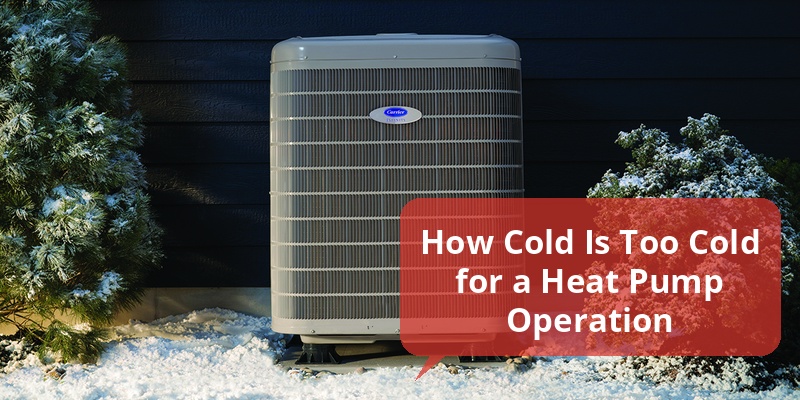Heat pumps are a popular and energy-efficient choice for heating homes in many regions of the United States. However, a common concern among homeowners is their performance in extremely cold temperatures. This article explores how cold is too cold for a heat pump to operate effectively, discussing the temperature thresholds, technological advancements, and tips for optimizing heat pump performance in winter conditions.
| Temperature Range | Heat Pump Performance | Recommended Actions |
|---|---|---|
| Above 25°F (-4°C) | Optimal efficiency and heating capacity | Normal operation, no additional support needed |
| 0°F to 25°F (-18°C to -4°C) | Reduced efficiency but still effective | Consider supplemental heating if prolonged cold occurs |
| Below 0°F (-18°C) | Significant efficiency drop, possible use of backup heat | Use auxiliary heating or hybrid systems for comfort |
Heat Pump Basics and Cold Weather Performance
Heat pumps work by extracting heat from outside air and transferring it indoors. Unlike traditional furnaces, they do not generate heat by burning fuel but use electricity to move heat efficiently. This process, however, depends on the ambient air temperature. As outdoor temperatures drop, the heat pump’s efficiency gradually decreases. Modern heat pumps have improved cold-weather capabilities, but their limits are important to understand for optimal use.
Temperature Thresholds for Heat Pump Operation
Most traditional air-source heat pumps perform efficiently at temperatures above 25°F. Between 25°F and 0°F, they can still function but with decreased output capacity. Below 0°F, many standard units struggle to meet heating demands without assistance. Heat pumps are typically rated to operate down to about -5°F to -15°F depending on the model and technology.
Modern Cold-Climate Heat Pumps
Advancements like variable-speed compressors and enhanced refrigerants have led to the development of cold-climate heat pumps that can operate efficiently at temperatures as low as -15°F to -20°F. These models maintain better heating capacity, reducing the need for supplemental heat, making them suitable for colder northern climates.
How Freezing Temperatures Affect Heat Pump Efficiency
Heat pumps become less efficient in freezing conditions for several reasons:
- Lower outside air temperatures reduce the heat energy available for extraction.
- Frost and ice buildup on the outdoor coil requires frequent defrost cycles, which consume additional energy.
- Compressor workload increases, leading to higher electricity consumption.
This results in higher operating costs and limited heating capacity during extreme cold spells.
Supplemental Heating Options for Extreme Cold
When temperatures drop below the heat pump’s optimal range, many systems use supplemental heat sources to maintain comfort:
- Electric resistance heaters integrated into the heat pump system provide extra warmth when needed.
- Dual-fuel or hybrid systems combine heat pumps with gas or oil furnaces to switch heating sources based on outdoor temperature.
- Wood stoves or pellet stoves as separate supplemental heat sources for homes in very cold climates.
Maintenance Tips to Improve Cold Weather Performance
Proper maintenance can extend the effective operating range of heat pumps:
- Keep outdoor units clear of snow and ice to avoid airflow obstruction.
- Regularly check and replace air filters to maintain airflow.
- Ensure defrost cycles are functioning properly to minimize ice buildup.
- Schedule annual professional inspections to optimize system efficiency.
When to Consider Upgrading or Adding Backup Heat
Homeowners in regions with harsh winters should monitor their heat pump’s performance during cold months. If the system struggles to maintain indoor comfort or energy bills spike dramatically, it may be time to:
- Upgrade to a cold-climate heat pump designed for low temperatures.
- Install a dual-fuel or hybrid system for reliable heating.
- Add supplemental heat sources like electric resistance heaters or gas furnaces.
These steps ensure year-round comfort without sacrificing energy efficiency.
